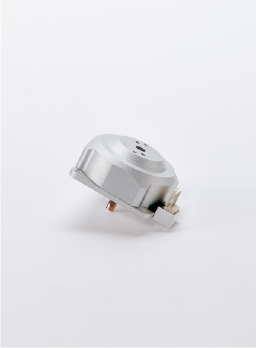
Ultrasonic motors for general environments

Ultrasonic motors (piezosonic motors) are quiet, high-torque motors that use piezoelectric ceramics, which expand and contract when voltage is applied, as their drive source. Unlike typical motors that use electromagnetic force, they do not use coils or magnets, but operate using frictional force, making them small and lightweight, yet capable of use in magnetic fields and without backlash. Taking advantage of these characteristics, they are ideal as direct drive motors for positioning stages, belt conveyors, angle indexers, robot arms, and other posture control devices, as well as motors for MRI and semiconductor manufacturing equipment.
Ultrasonic Motors for General Environments
Product Lineup

Ultrasonic motor for general use in offices, factories, laboratories, etc.
They are ideal for use in transport devices such as stages, belt conveyors, and indexing tables, as well as in chucking devices that repeatedly start and stop, and as motors for robot arms. Ultrasonic motors are smaller and lighter than DC motors with the same torque, and allow for more precise position control than stepping motors.
Small single shaft motor PSM40S-A


Single shaft motor PSM60S-A
Sensorless model
An ultrasonic motor that can be combined with a sensor provided by the customer. By changing or additionally machining the shaft, you can use any sensor such as a limit switch, potentiometer, or absolute encoder. There are single shaft type A type and double shaft type B type.
Small single and double shaft motor PSM40S-B

Double shaft motor PSM60S-B


2,000p/r motor with encoder
PSM60S-E2T
1,000p/r motor with encoder
PSM60S-ET
500p/r motor with encoder
PSM60S-E
Ultrasonic motor equipped with an optical encoder that outputs Z (I) phase in addition to A and B phases. Position control and speed control are possible using an encoder. You can choose between 500[p/r], 1,000[p/r], and 2,000[p/r] models according to your application.
Control model

500p/r with encoder
small motor
PSM40S-E
With encoder 1,000p/r
small motor
PSM40S-E2T
2,000p/r with encoder
Small motor
PSM40S-E2T







